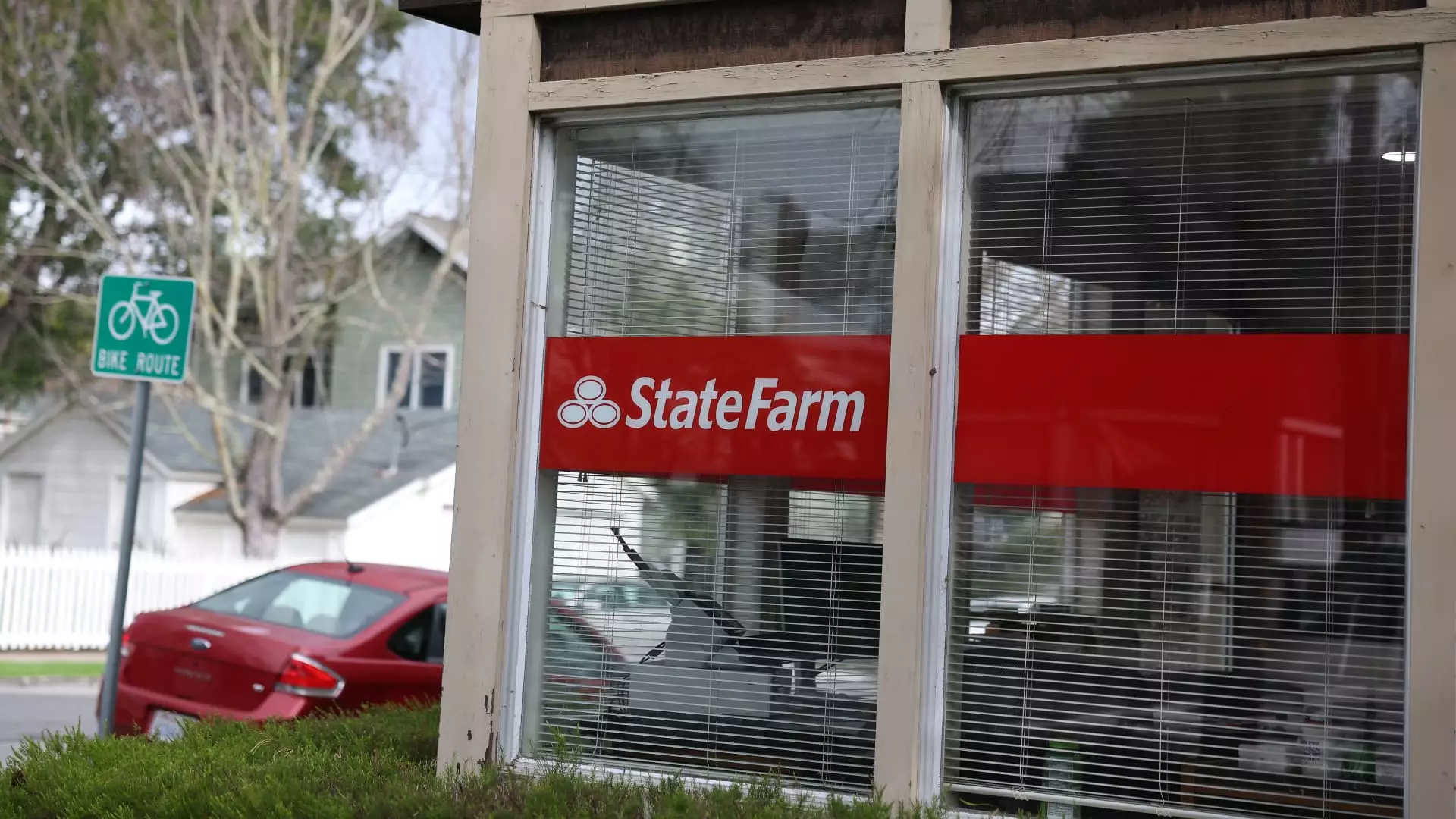California is on fire—quite literally. The devastating wildfires that plagued Los Angeles have not only scarred landscapes but also burned deep holes in the finances of one of the nation’s largest insurers, State Farm. The dramatic toll of these natural disasters is unprecedented, with damage estimates reaching a staggering $275 billion. As this crisis unfolds, the call for an urgent rate increase by State Farm sounds less like a responsible adjustment and more like a desperate bid to stay afloat. The insurance company is seeking to raise homeowners’ premiums by 17%, a figure it previously pitched as 22%. This back-and-forth smacks of uncertainty and panic, unsettling to both policyholders and the market alike.
While the California Department of Insurance granted State Farm provisional approval to hike rates, the very rationale of such increases begs scrutiny. Is it truly necessary, or is this a reckless maneuver that could jeopardize the financial stability of millions of California homeowners? Within the tangled mess of rampant wildfires and deteriorating financials, the average Californian is left feeling like a pawn in an unsanctioned game of economic chess.
“Titanic” in the Making?
Nikki McKennedy, an attorney for the California Department of Insurance, made a striking analogy during the hearings, comparing State Farm’s plight to the Titanic on a collision course with an iceberg. While the metaphor dramatizes the situation, it underscores a grim reality: the sinking feeling that millions of Californians may soon find themselves without adequate coverage if State Farm’s ongoing struggles prove insurmountable. The idea that we could be “going into the water” without sufficient life rafts—read: adequate insurance—should send chills down the spine of every Californian homeowner.
State Farm currently holds approximately 20% of the state’s homeowner market. With nearly 3 million policies at stake, the urgency of the situation is amplified. If State Farm is indeed on shaky ground, then the ramifications extend beyond its balance sheets; they risk eliminating essential coverage during a time when the state is most vulnerable to natural disasters.
The Threshold of Blame
As State Farm battles to rejuvenate its financial health post-wildfires, the narrative begins to morph. It isn’t merely about wildfire damages; it’s about the inadequacies of a system that has critiqued performance for years. State Farm has been criticized for years due to weak underwriting and deteriorating financial scenarios, issues magnified in the wake of this year’s disasters. Insurance Commissioner Ricardo Lara has historically been hesitant to greenlight rate hikes; after all, California has seen insurers struggle, pay out exorbitantly in claims, and face a general loss of funds over the years due to increasingly severe natural disasters.
This denial to approve necessary increases places pressure not only on State Farm but on homeowners who now find themselves trapped in a cycle of escalating premiums. While efforts are made towards a “Sustainable Insurance Strategy,” are we merely watching the system crumble while awaiting a savior?
Consumer Fears and the Fight for Justification
The landscape is fraught with apprehension. Consumer advocacy group Consumer Watchdog stands firmly against State Farm’s proposed increases, arguing that the insurer hasn’t sufficiently justified its need for heightened rates. William Pletcher, their lead attorney, calls out the inconsistency inherent in State Farm’s proposals. From a push for a steeper raise to a lesser increment, it’s unclear if the insurer is genuinely attuned to the needs of its customers or if it is merely capitulating to internal pressures.
For a large insurer like State Farm, the expectations are immense. Homeowners expect accountability, transparency, and, importantly, justification for any financial request that directly impacts their lives. When a company consistently fails to offer such transparency, it risks alienating its base and engendering distrust. It appears that amidst the chaos, the voice of the policyholder is being drowned out by the cacophony of corporate desperation.
The Grim Future of Homeowners Insurance in California
The larger concern here lies within the fabric of California’s insurance ecosystem itself. The chilling reality is that State Farm is not singularly responsible for these rate hikes; many insurers are limiting policies or discontinuing new applicants altogether due to market volatility. The FAIR Plan, California’s insurer of last resort, has been inundated with those forced out by mainstream providers, indicating a systemic failure that can no longer be ignored.
As California grapples with climate change’s ominous footprint, policyholders are caught in a paradox. They need reliable insurance more than ever, but the ever-looming threat of increased premiums and limited coverage sends a wake-up call. The question arises: when will insurers, including State Farm, pivot from survival to accountability, providing a safety net that homeowners can trust during unpredictable times? The answer remains elusive but desperately needed amid soaring risks and diminishing peace of mind.


Leave a Reply